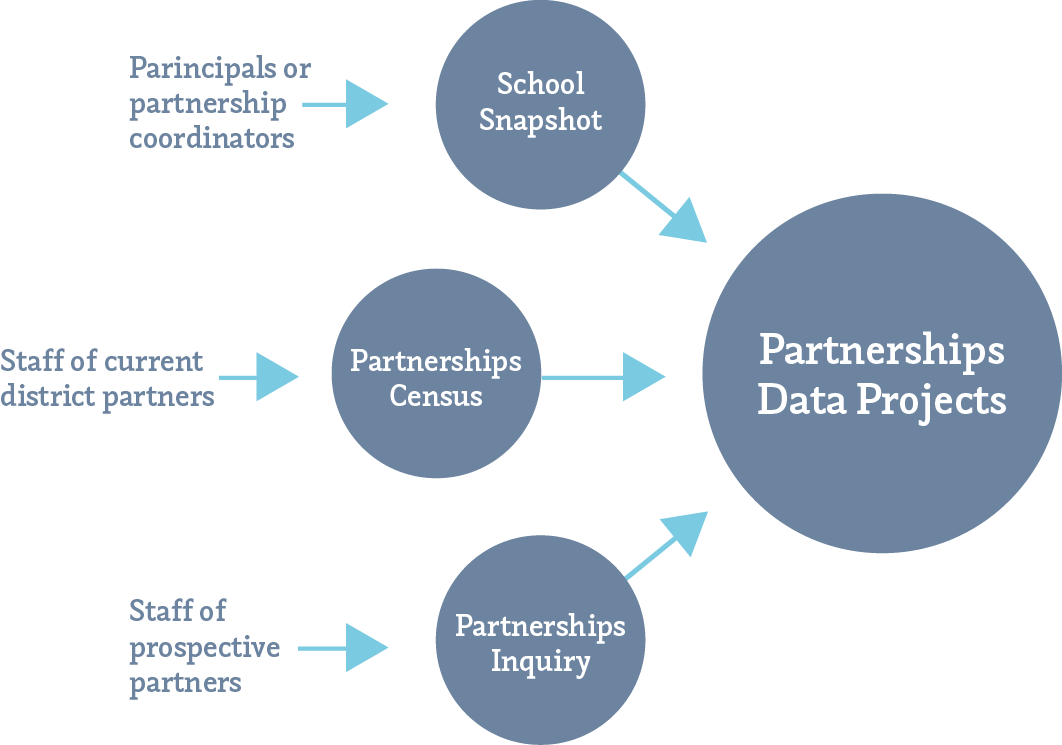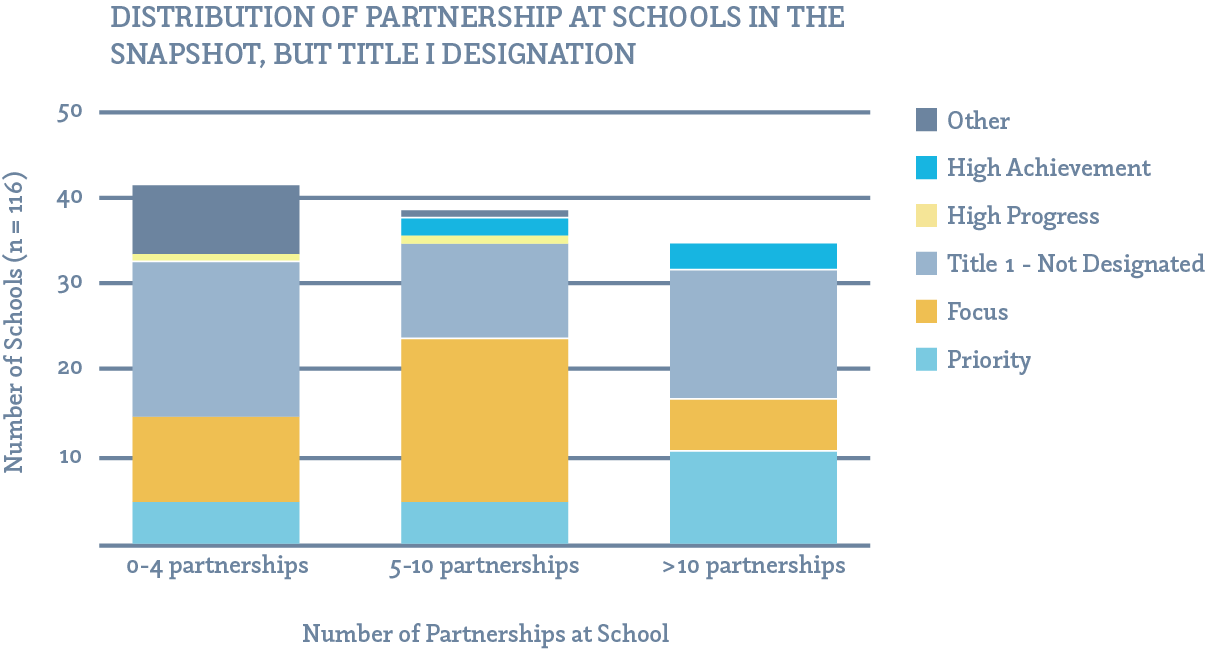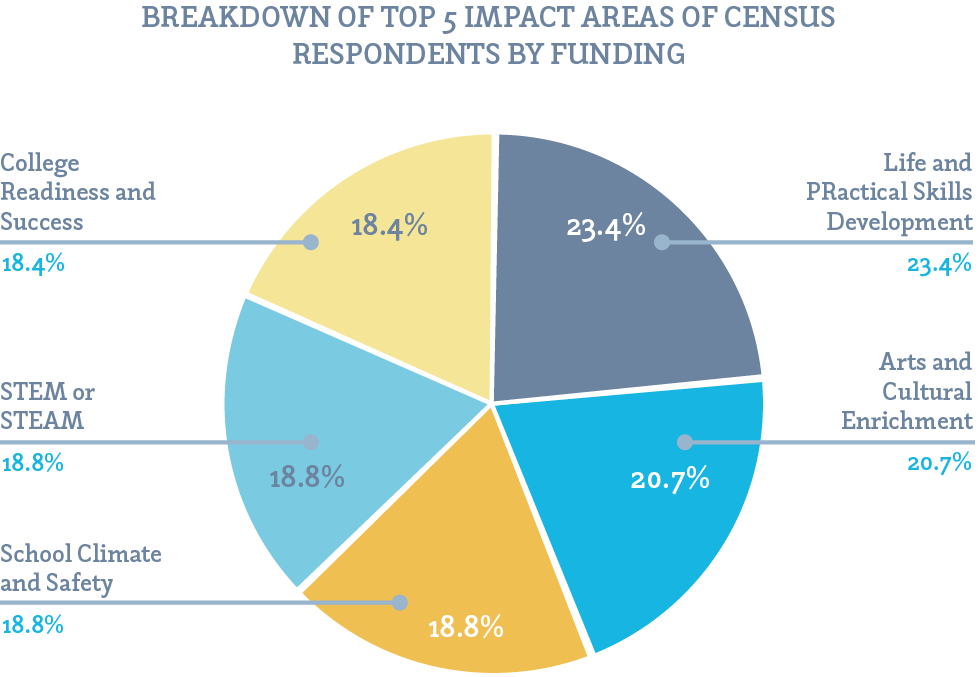In Philadelphia, a structural budget deficit has forced schools to begin each year with fewer resources available than the year prior. While the opportunity for a fair funding formula may be on the horizon, external partners (or resource-bringers) have come to play an increasingly important role in supporting schools. Members of the local nonprofit, higher education and corporate sectors may look to partner with neighborhood schools, and their work continues to lessen needs gaps. Some schools, whether because of their access to resources or their ability to attract partners, are able to build extensive partnership networks that support their missions. However, if greater resource equity is to be achieved across the district, strategic coordination of resource-bringers at the system level is a necessary step.
The Office of Strategic Partnerships (OSP) at the School District of Philadelphia (SDP) is piloting the Partnerships Data Project to create an open, crowdsourced database of district and school partnerships. The main objective of this initiative is to create a web-based application that not only catalogs existing partnerships, but also facilitates the formation of new connections between schools and partners. Through the initial phase of data capture, the OSP has received responses from over 100 schools and over 150 resource-bringers. The results to date reveal system- and school-level themes that will guide the work of the OSP in supporting schools and partners to develop sustainable school-based partnerships.

Figure 1. Partnerships Data Project Inputs Model.
Background of the Data Project
The landscape of K–12 public education has changed radically in recent years. In Philadelphia, schools have fundamental needs that go unmet, ranging from a dearth of school support staff to programmatic and supply needs. Despite the structural deficits, public schools in Philadelphia have the same mandate to meet high benchmarks. While partnerships cannot—and should not—close the needs gap, they do have the potential to lessen the impact on students by providing financial support, additional school-based staff, supplementary services and capacity building.
Guided by SDP’s Action Plan 2.0, and under its strategy of developing a system of excellent schools, the Office of Strategic Partnerships is charged with ensuring that “all schools are porous” (http://webgui.phila.k12.pa.us/offices/s/strategic), that is, open to partnerships that aid and support students to thrive. Partners from every sector—community organizations and nonprofits, colleges and universities and corporations—have stepped up to support schools and students in a variety of ways: financial and in-kind donations, volunteer involvement, services and programming and more. These partnerships exemplify the ideals of public service and cross-sector community empowerment.
The OSP is implementing a pilot to capture data on school-community partnerships in Philadelphia and deepen our collective understanding of how, where and why partnerships form and persist. Gleaning best practices and readiness indicators from high-functioning partnerships, the OSP will use these findings to prime more schools and potential partners for partnerships success. Our goal is to ensure that all schools are able to manage and benefit from partnerships that are aligned with SDP’s mission to prepare students for college, careers, and 21st-century citizenship.
Tools of the Data Project
The Partnerships Data Project is designed to collect current and relevant data that will assist the OSP in addressing partnership needs gaps by informing our partnerships’ work. By aggregating system-wide data on school needs and partner resources, the project is helping the OSP to create a permanent service delivery system that comprises external partnerships that meet schools’ needs. Driven by the principles of customer service and community engagement, the OSP staff, which includes an AmeriCorps VISTA Strategic Partnerships Coordinator and four school district employees, supports and oversees the project's implementation.
Three data-gathering tools constitute the OSP Data Project: the School Partnerships Snapshot, the Partnerships Census, and the Partnership Inquiry.
The School Snapshot surveys SDP schools on their current partnerships’ strengths as well as needs. Schools list their partnership portfolios, including services and programs, donors and volunteers. Schools also complete a partnerships wish list to identify each school’s direction and focus, guiding the process of partner-matching and narrowing the schools’ scopes in their own partnership work.
The Partnerships Census surveys resource-bringers on their partnerships with district schools. Responses are collected through outreach to various convening organizations and funders by impact area. External partners complete the Partnerships Census for each program they oversee, self-reporting the funding, enrollment and impact area(s) of each partnership.
The Partnerships Inquiry is used by new and existing partners to initiate the process of establishing or expanding partnerships with district schools. Upon completing the Inquiry, external partners receive updates from the Office of Strategic Partnerships on next steps. The Inquiry is the newest tool that the OSP is utilizing to maintain open communication with schools and partners for their mutual benefit.
Current Results
Based on the information collected so far through the Partnerships Data Project, a few observations can be made about the extant partnership terrain. External partners from an array of impact areas are providing critical assistance to schools. Notwithstanding, these partnerships are not distributed evenly across the district: there is a wide range in the number of partnerships at each school, with some engaged with more than 10 partnerships, while other schools have far fewer.
Through the School Snapshot, the OSP data project has received responses from roughly half of SDP’s schools (116 responses as of December 2014). From these responses, schools have self-identified 1,117 school-community partnerships, including donations and volunteer involvement, with a median of six partnerships at each school. The bar graph below shows an aggregate view of the number of reported partnerships at district schools that have submitted the Snapshot. Thirty percent of respondent schools have reported more than 10 partnerships each, and 34% have reported 5–10 partnerships in their portfolios. The remaining 36% of respondent schools have reported zero to four partnerships each, and 14% of those reported zero or one partnership each. Tellingly, this distribution shows the inequitable spread of partner resources system-wide.

Figure 2. Distribution of reported school-community partnerships at district schools that completed the Snapshot. School counts are further subdivided by Title 1 designation (n = 116, December 2014).
Through the Partnerships Census, the Partnerships Data Project has logged 178 services and programs provided by external partners. These partnerships represent a self-reported value of $68.8 million in funding that is generously provided by resource-bringers from various sectors. As the OSP continues to collect these data, it is clear that this number depicts only a small subset of the constellation of partnerships that are currently serving SDP students. The pie chart below shows the top five impact areas of services and programs recorded in the Census by reported funding, providing a rough idea of partnership focuses as reported through the Census thus far.

Figure 3. Distribution of reported partnerships by impact area, ranked by reported program funding. Impact areas for a program can be duplicated because partners can indicate more than one impact area for a program (e.g., an arts-based literacy program).
The Future of the Data Project
The Partnerships Data Project is gathering data from schools and partners that are laying a foundation for future partnerships work. The final product of the project will be a web-based application that connects schools to partners, based on a model that will facilitate direct school-partner matching. Schools would be empowered to state their specific needs and pursue partnerships to meet those needs, with awareness of the levels and kinds of support that resource-bringers can provide. Likewise, resource-bringers would be able to connect with school staff and expand the reach of their services and programs based on their capacity and corresponding school needs and interests.
Additional questions from this phase of the project include how to inculcate confidence among schools and partners to comprehensively report information on their partnerships and how to maintain a crowdsourced database with accurate and up-to-date information. The OSP is continuously working to resolve these issues and aggregate quality data on the partnerships landscape. By building the infrastructure to assist with forming and coordinating system- and school-level strategic partnerships, the OSP can help maximize partnerships across the district for school and student needs. All students deserve a public education that will serve them throughout their lifetimes. Our goal is to build a system of excellent schools for all students, and we are bringing the entire city on board.


